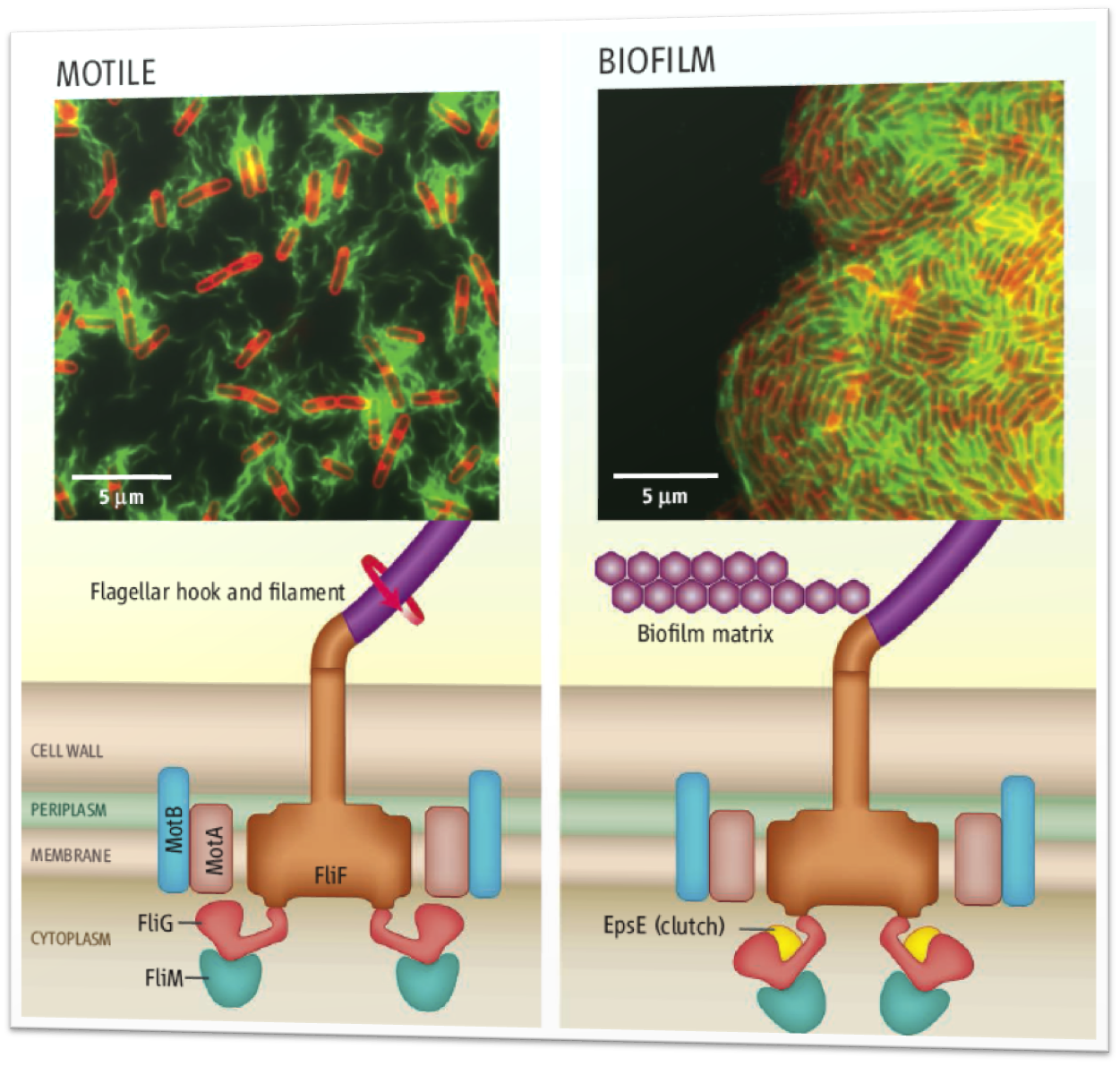|
Here is a simple explanation of how the clutch system works:
What happens is that the gene SinR upregulates the expression of flagellar genes i.e. MotA/MotB etc. and downregulates expression of biofilm forming genes. If SinR is absent, biofilm takes over and the bacteria loses its motility. It was found that SinR represses the EpsE gene, thus the absence of SinR causes the expression of EpsE (1).
It was later determined that EpsE is responsible for disengaging the clutch in the flagellar motor (2). This means that instead of turning the motor on or off, bacteria's motor is continuously spinning, but disengaging or engaging the flagella to the motor is regulated by EpsE and thus the EpsE gene. If we can characterise the EpsE gene, we should be able to control whether the bacteria moves or not, irregardless of its orientation, which brings us to the next problem.
2005 Penn State Uni team did a similar project, but they didn't use EpsE/SinR gene expression. Instead, they played around with the actual motor of the bacteria, motB gene which generates the torque required to give flagellum its rotating power (3).
|

Go back to the >>> Specifications Page >>>
|